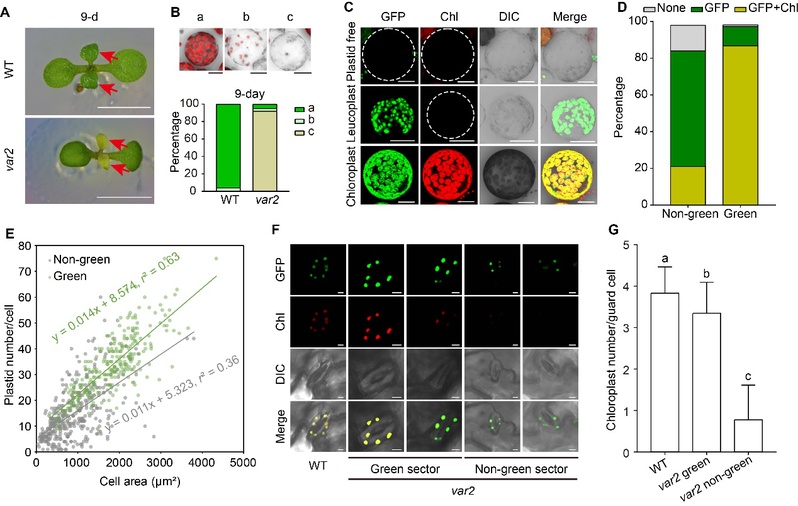Recently, a research team led by Huang Jirong from the SHNU School of Life Sciences published a study titled Arabidopsis leaf variegation is caused by simultaneous defects in chloroplast development and division in Plant Communications. The study reveals that the variegated leaf phenotype is not caused by a single developmental defect as traditionally understood, but rather results from simultaneous disruptions in both chloroplast development and division. It also discovered that the signaling factor COP1 mutation can reverse the variegated leaf phenotype, while the VAR2/FtsH2 protein interacts with the autophagy key protein ATG8a to regulate chloroplast division. This work provides new insights into the mechanisms of chloroplast biogenesis and leaf color regulation.
This study challenges the traditional understanding that mottled leaves are solely caused by developmental defects in chloroplasts, establishing a new model of coordinated regulation of development and division in them. It not only enriches the molecular mechanisms of chloroplast homeostasis maintenance but also provides a theoretical basis for improving leaf color traits in crops, particularly for the creation of ornamental foliage plants.
The corresponding author of the paper is Professor Huang Jirong from Shanghai Normal University (SHNU). The SHNU lecturer Wu Wenjuan and SHNU doctoral student Guo Wei from Shanghai Normal University are the co-first authors of this study. The research was supported by the National Natural Science Foundation of China, the Shanghai Natural Science Foundation, and the Scientific Research Innovation Program of the Shanghai Municipal Education Commission.




